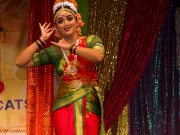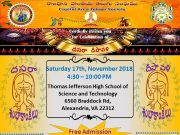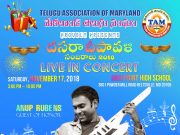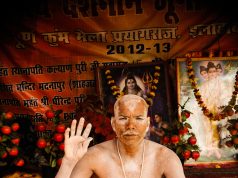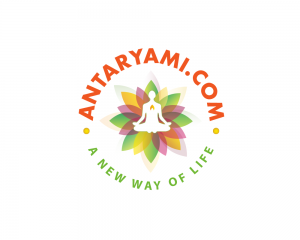The Meaning of the 14 Lokas in Hindu Mythology
India is such a large country, there are several branches of Hinduism stemming from different regions. As a result, the esoteric meaning of symbols in Hindu mythology vary. The seven upper worlds and seven lower worlds are a prime example.
Although the various Hindu traditions agree that Lokas represent certain worlds or realms, some believe the worlds actually exist, whilst others relate them to states of consciousness.
Personally, I am more inclined to agree with the second summation, although, Loka do exist metaphysically as well and actually represent states of consciousness. This will become apparent when we look more closely at the 14 lokas.
The realm in which anybody is able to access depends on the frequency they are vibrating. But essentially, the rate of vibration is directly related to consciousness, and this is what is expressed by the 14 loka of Hindu mythology.
Vedanta traditions speak of 14 realms, but each realm represents a state of conscious awareness which is subsequently reflected in a person’s nature. There are seven upper realms and seven lower realms. We typically flit between these realms on a daily basis, depending on the lessons we need to learn.
The 7 upper worlds of Hinduism
The seven upper worlds, or vyahrtis, represent a high-state of conscious awareness. They range from being awake and pass through the various stages of enlightenment until the rishi reaches Samadhi – absolute or full enlightenment – the realm of Lord Vishnu and Shiva which is comes from the mind of Lord Brahma.
1. Satya-loka – Abode of Truth or Samadhi. The highest state of conscious awareness and the realm in which atman and Brahman are reunited eternally.
2. Tapa-loka – A pure state of consciousness. From this state it is easy to access Satya-Loka if you are already fully enlightened, but need a conscious awareness in everyday life on Earth.
3. Jana-loka – This is a level of illumination known as “God-consciousness”. People who reach this level today are typically known as ‘mystics’ but are usually great healers or spiritual teachers.
4. Mahar-loka – This is the realm of consciousness that can be accessed by the great mythological Rishis such as Bhrigu Muni and Markendeya. They have an incredible depth of understanding and can be considered devas or demigods.
5. Svar-loka – In Hindu myth, this realm is inhabited by the 33 Vedic gods who represent individuals that have mastered their emotions and have no attachments in the physical realm. In western traditions, this is the realm known as Heaven, and in Islam it is called, Jannat. Here you find inner peace.
6. Bhuvar-loka – The Bhuvar-loka are described as being born in the earthly realm, but symbolically represent people that have found contentment and fulfilment in their life, but also vibrate at a higher frequency and have a higher-state of conscious awareness.
7. Bhur-loka – The Bhur-loka is the earthly realm and is the state of consciousness for many people, awakened or otherwise. Attachments to material possessions or physical needs are still present, but the initiate is aware of themselves and others.
The seven lower realms of Hindu mythology
The lower realms are lesser states of consciousness where the highest inhabitants enjoy an opulent life of materialism, but have very little spiritual insight. The realms are described in the Puranas as being dark planets devoid of sunlight – which is symbolic for enlightenment.
1. Atala-loka – This realm is ruled by Bala who creates three types of women; self-willed, lustful and whorish. Bala is the son of Maya, which to the ancient scribes represented the world of delusion where the Truth of reality is buried beneath conscious awareness. The women – symbolic of emotions that conjure cravings – overcome the mind and make us selfish, horny and greedy. Individuals simply are not aware it is the ego that drives their desires.
2. Vitala-loka – The inhabitants of Vitala live in a state of ignorance. They are typically successful people but feel immune to spiritual development to the extent they do not believe it exists. Although they are aware of the demons that dwell in their own consciousness, they ignore them because they think they are too good to make mistakes.
3. Sutala-loka – The planet Sutal is ruled by the benevolent King Bali Maharaj, chief of the asuras. The asuras are demons that fight against the devas and Gods. In this realm, people are able to learn from their mistakes, hence we find Bali being blessed by Lord Vishnu. Bali is equivalent to Satan in western traditions. Satan, or Lucifer – the light bringer – represents fallen man that has weaknesses, but is able to overcome them by vowing to improve whenever they make a mistake.
4. Talatala-loka – The world of Talatala is the realm of the sorcerer, Maya, which literally means illusion. The inhabitants of the realm live in a state of consciousness where the Truth of reality is veiled because it is beyond their scope of understanding. Whereas the people in the higher realms of the lower worlds choose to ignore the illusion, people that live in a talatala state of conscious awareness are so attached to the idea of individualism they believe every experience they have is the same for everybody. As a consequence, they become opinionated, argumentative and obstinate.
5. Mahatala-loka – The mythical realm of Mahatala is inhabited by the Nagas, seven-headed serpents, some of whom were beautiful princesses that would appear from the underground to abduct handsome men. The symbolic meaning here is when you are unable to control your cravings and fall for temptation even though the voice in your head from the higher realms is telling you not to do it. Overcoming emotions and cravings in these situations enables you to raise spiritual awareness, which is why we also find the naga in Hindu iconography hovering above the heads of the Gods. The story reciting the birth of Krishna in which a serpent protects the baby from the rain gives us insight revealing the nagas are a way to reach understanding by being aware of our emotions and overcoming them.
6. Rasatala-loka – Cruel demons rule the realm of Rasatala and are in direct conflict with the gods. This is a state of consciousness whereby individuals have little to no control over their actions and do what they want, whether it is right or wrong. You will see this realm in constantly misbehaved children and adults who aware they are doing wrong, but don’t care.
7. Patala-loka – Here we find the lowest realm of consciousness before an individual ventures into a state of Hell. The inhabitants here are filled with hatred, malice and anger. Yet at this point it is not too late to learn from mistakes and misery.
The realm is governed by Vasuki, King of the Serpents and the snake we often find Vishnu sprawled upon or wearing as an ornament in Hindu iconography. This image demonstrates how Vishnu has complete control over his emotions, desires and attachments to the material world.
The jewel that Vasuki wears on his head reveals we can still become illuminated beings if we choose to become aware of the wisdom of Vasuki. Through self observation, we are able to transcend the material world and overcome our weaknesses.
















